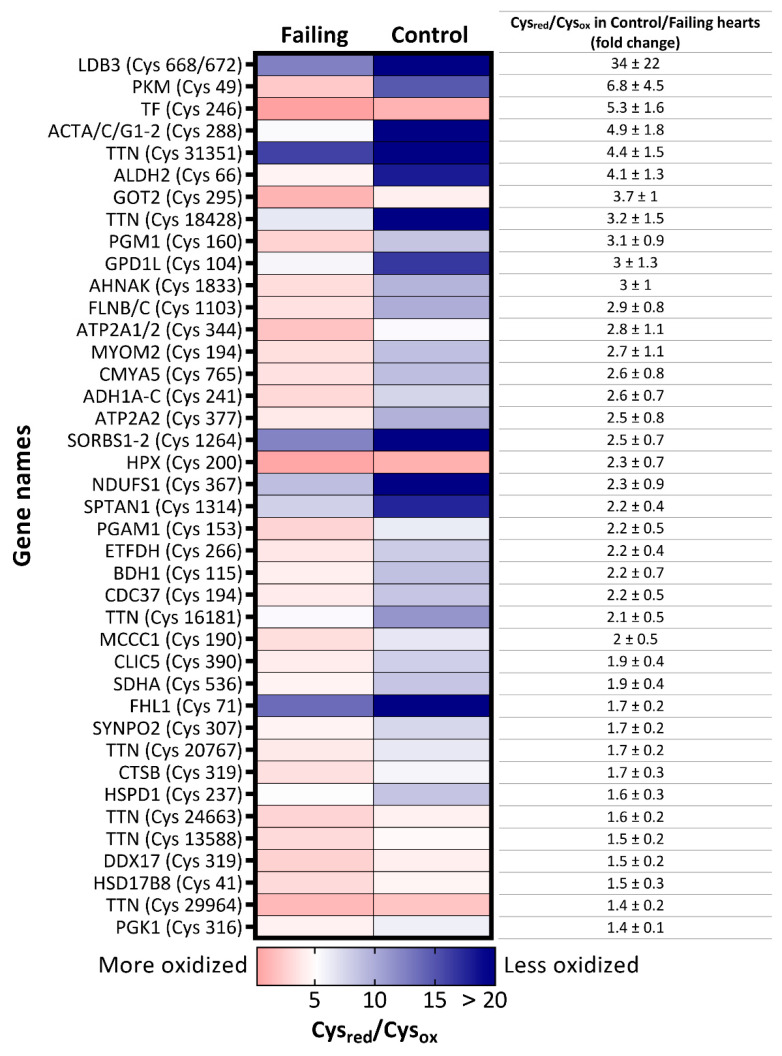Figure 2.
Heatmap of significantly more oxidized-cysteine residues in failing hearts. Significantly more oxidized cysteine-containing peptides p-value < 0.05, fold-change (Cysred/Cysox ratio of control versus failing heart >1.35) in failing hearts are labeled with gene names of their corresponding proteins and the cysteine position in the amino acid sequence. Colors of the map illustrate a degree of oxidation: the red color indicates lower Cysred/Cysox ratio, depicting higher degree of oxidation. On the contrary, the blue color represents higher Cysred/Cysox ratio and therefore indicates lower oxidation state of the cysteine.

